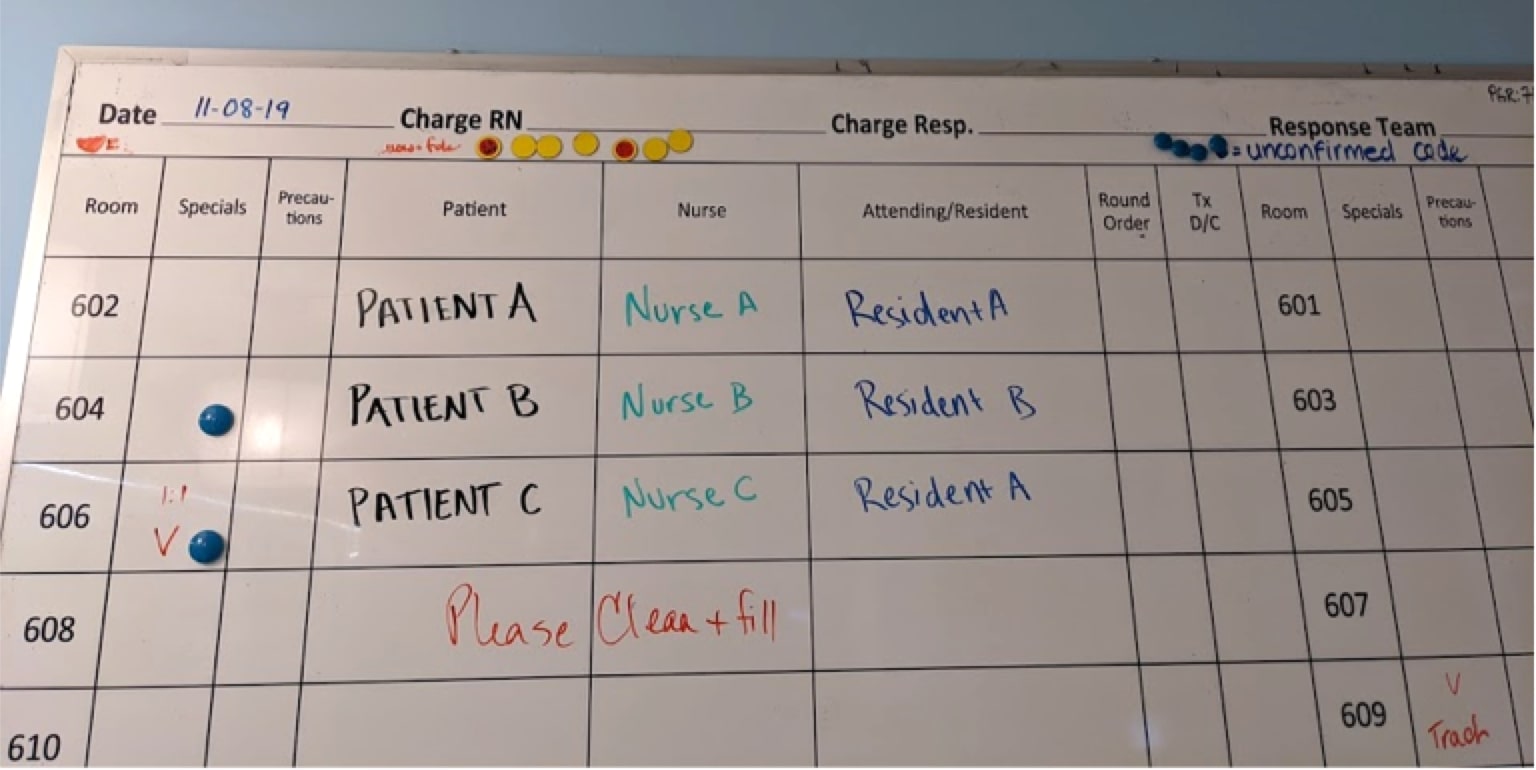Background: Patients admitted to the hospital without a documented code status specifying what, if any, heroic measures they would consent to in the event of an emergency are at risk for receiving medical interventions that are not goal concordant with their wishes1. This invites patient harm, patient and family dissatisfaction, and may increase hospital length of stay and costs. Retrospective analysis of patients admitted to the intensive care unit (ICU) of a 268-bed community hospital during a one-month period demonstrated that nearly 30% (24/82) did not have a documented code status. Clinicians identified lack of reminders to address code status in their day-to-day workflow as an addressable target during root cause analysis.
Purpose: We aimed to increase the rate of confirmed code statuses for patients under the medical service in the ICU significantly in one month’s time, with plans to expand successful interventions to other medical floors sequentially.
Description: Blue circular magnets served as visual cues identifying patients with unconfirmed code statuses on the patient roster board (Image 1). During the routine daily interdisciplinary team meeting, where each patient’s plan for the day is discussed briefly, residents were tasked with acknowledging out loud each patient with a blue magnet. Residents were expected to delineate the reason why code status had not been confirmed as well as next steps towards confirmation. Nurses, case managers and social workers were invited to participate in this process and facilitate reminders as well. This action’s goal was to remind physicians to address code statuses with patients on a daily basis. Code status confirmation rate increased from 71% (58/82) to 84% (70/83) during the project period (p < 0.0413).
Conclusions: Code status confirmation is imperative for admitted patients. By addressing goals of care early on during an admission, patient safety increases as does goal-concordant care. Visual cues are helpful reminders to clinicians who may forget to address this aspect of healthcare, as is involving other interprofessional team members in the process. This intervention is low tech and easily implemented.

